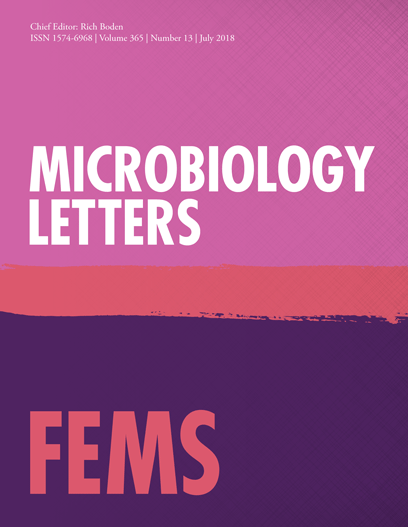Ver ítem
- xmlui.general.dspace_homeCentros Regionales y EEAsCentro Regional Santa FeEEA RafaelaArtículos científicosxmlui.ArtifactBrowser.ItemViewer.trail
- Inicio
- Centros Regionales y EEAs
- Centro Regional Santa Fe
- EEA Rafaela
- Artículos científicos
- Ver ítem
Functional role of antibodies generated in heifers through immunization with Staphylococcus aureus vaccines in invasion and phagocytosis assays
Resumen
A successful Staphylococcus aureus vaccine should elicit a long-term antibody response that prevents establishment of the infection. The aim of the present study was to evaluate the functional role of antibodies raised against different S. aureus CP5 vaccines in invasion to bovine mammary epithelial cells (MAC-T) and phagocytosis by bovine milk macrophages in vitro. Sera and whey from cows immunized with a whole-cell S. aureus CP5 vaccine adjuvanted with
[ver mas...]
A successful Staphylococcus aureus vaccine should elicit a long-term antibody response that prevents establishment of the infection. The aim of the present study was to evaluate the functional role of antibodies raised against different S. aureus CP5 vaccines in invasion to bovine mammary epithelial cells (MAC-T) and phagocytosis by bovine milk macrophages in vitro. Sera and whey from cows immunized with a whole-cell S. aureus CP5 vaccine adjuvanted with Al(OH)3 or with ISCOM Matrix, significantly reduced internalization of S. aureus in MAC-T cells without significant differences between both groups. The effect of antibodies generated by a S. aureus whole-cell and a lysate vaccine formulated with ISCOM Matrix was also evaluated. Sera and whey from both immunized groups significantly reduced S. aureus internalization in MAC-T cells without significant differences between both groups. Whey antibodies against whole-cell and lysate vaccines were also able to inhibit internalization in MAC-T cells of a heterologous S. aureus strain. In addition, sera from animals vaccinated with S. aureus lysate or bacterin promoted milk macrophage phagocytosis. These results provide an insight into the potential mechanisms by which these vaccines can afford protection to the mammary gland against S. aureus intramammary infection.
[Cerrar]

Autor
Renna, María Sol;
Pereyra, Elizabet Amanda Lorena;
Baravalle, Celina;
Camussone, Cecilia;
Dallard, Bibiana Elisabet;
Marcipar, Iván Sergio;
Calvinho, Luis Fernando;
Fuente
FEMS Microbiology Letters 360 (1) : 62–69 (November 2014)
Fecha
2014-11
ISSN
0378-1097
1574-6968
1574-6968
Formato
pdf
Tipo de documento
artículo
Palabras Claves
Derechos de acceso
Abierto
 Excepto donde se diga explicitamente, este item se publica bajo la siguiente descripción: Creative Commons Attribution-NonCommercial-ShareAlike 2.5 Unported (CC BY-NC-SA 2.5)
Excepto donde se diga explicitamente, este item se publica bajo la siguiente descripción: Creative Commons Attribution-NonCommercial-ShareAlike 2.5 Unported (CC BY-NC-SA 2.5)


